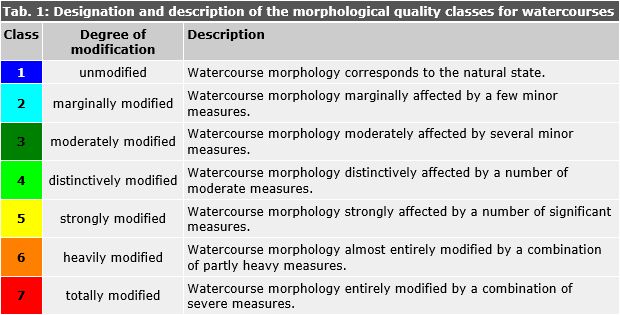Three different methods have been applied to determine the morphological state of the water bodies.
1.) Desktop survey method for rivers and streams (ÜV, LAWA, 2002). The ÜV is based on the interpretation of aerial images as well as current and historic maps, mainly topographic and geological maps. The ÜV provides a broad overview on the morphology of rivers and streams at comparably low cost. However, not all relevant parameters can be derived, especially those characterising the river bed. This method has therefore not been applied in Berlin after 2001.
2.) On site survey method for small rivers and streams (VOV, LAWA, 2000). The VOV is based on information obtained on site. Therefore, it provides a more precise and thorough assessment of the relevant parameters, including those characterising the river bed.
3.) Lake shore survey method (SUK, LUNG, 2004). Similar to the ÜV, the SUK is also based on aerial images and maps (especially topography, geology, bathymetry, habitats). Additionally, all lake shores are observed from a boat in order to allow for the assessment of parameters not easily accessible from aerial images.
All applied methods classify the morphology of individual river or lake shore segments into seven classes (see Table 1) ranging from "unmodified" (class 1) to "totally modified" (class 7).

